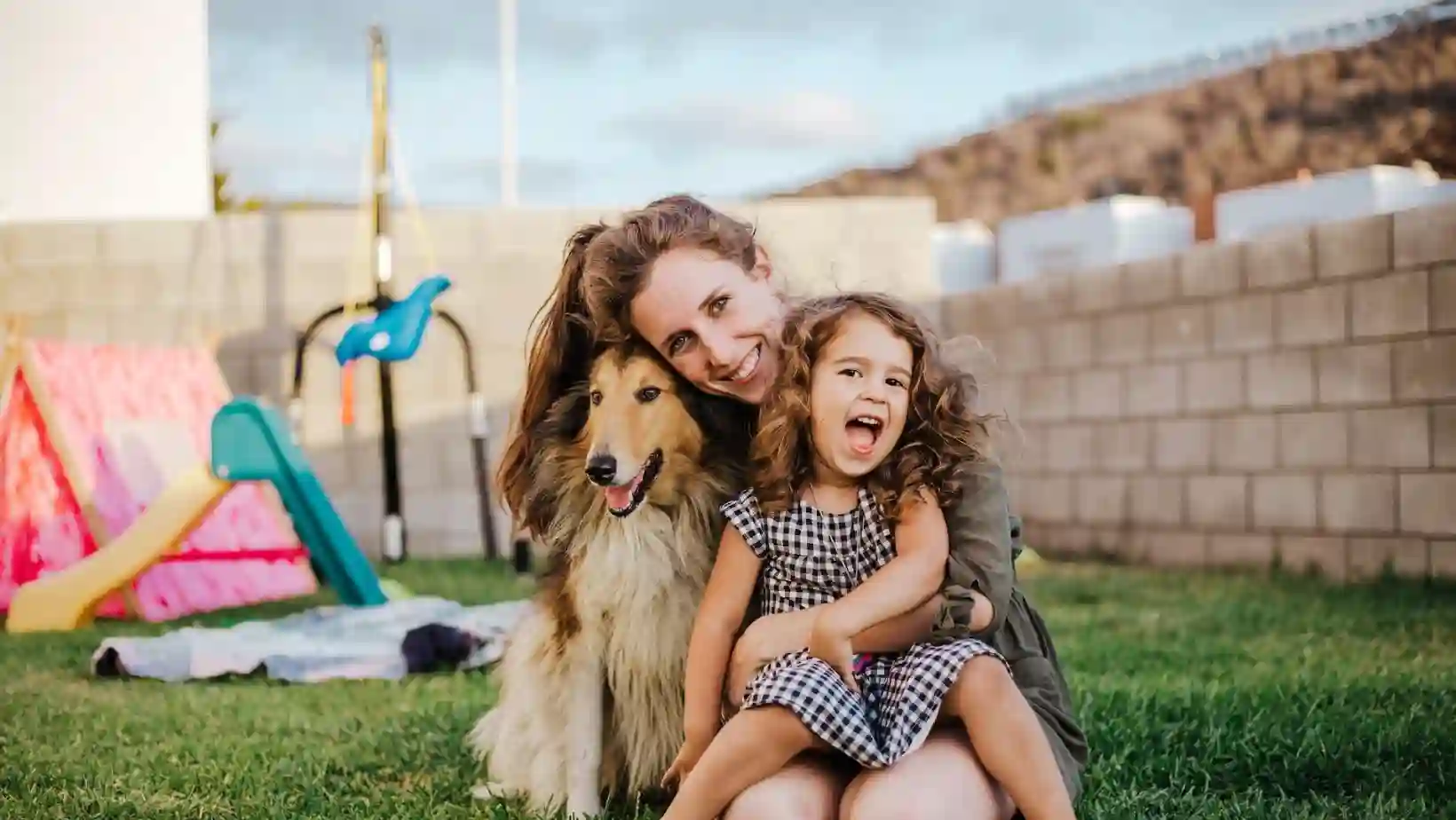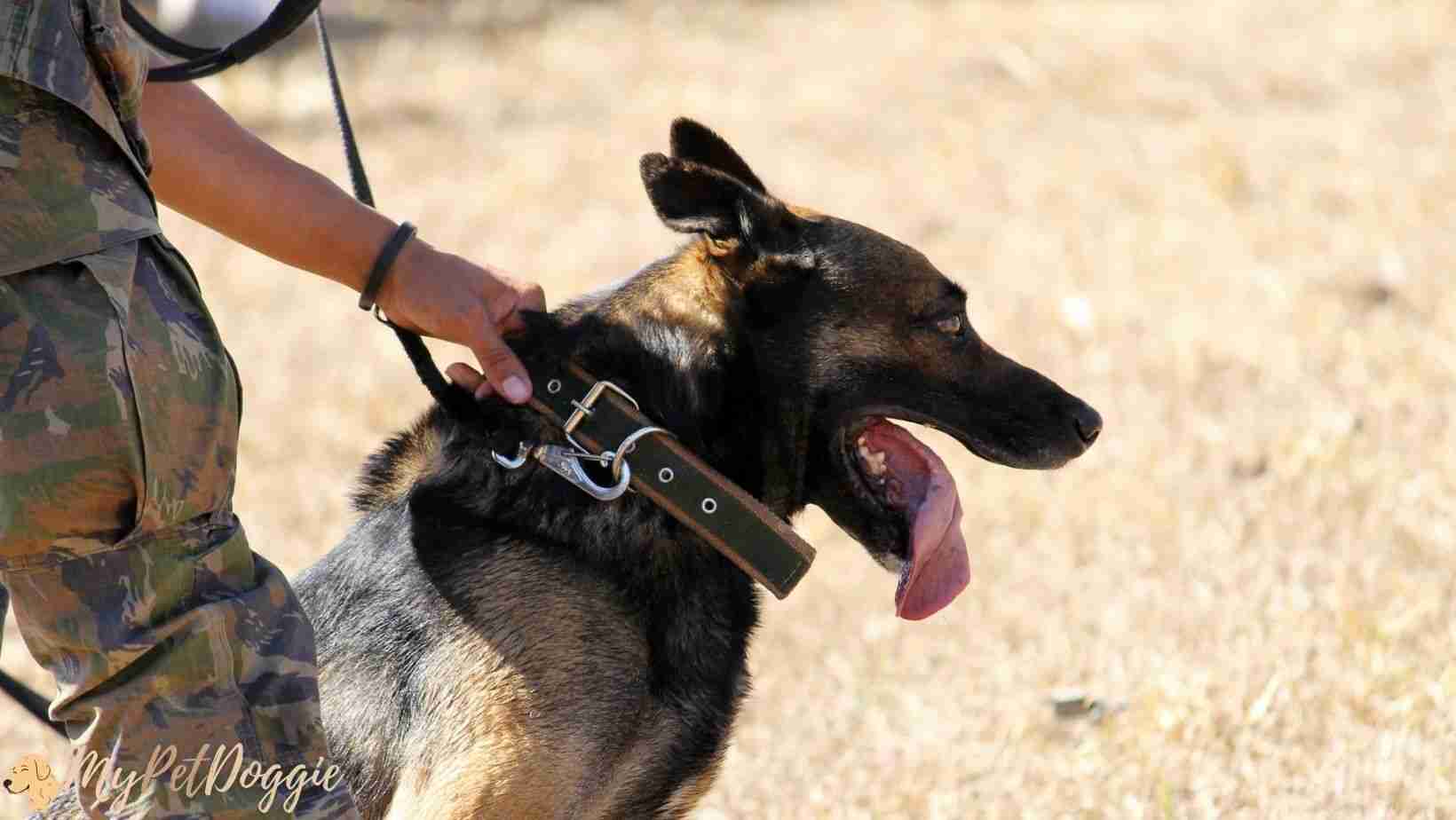Every time you get a new dog or puppy, there are usually a lot of things you need to buy for your pet in order to make sure he/she is cared for. Usually, items like a leash, collar, crate, and bed are on that list. But have you ever thought about one little, straightforward thing that might be accidentally left off of this list? You read that right—a blanket!
You may have observed that your dog enjoys jumping on the floor-mounted laundry baskets or cuddling up next to your pillow; hence a blanket to let your dog have a designated private space can be perfect.
But, the question is…
Do Dogs Need Blankets In Winter?
Blankets are a perfect choice to protect your dog from the cold and sometimes freezing weather. The common rule is that if the weather is too cold for you, the same will be the case for your dog; hence, yes, dogs do need blankets in winter.
According to the Tufts Animal Care and Condition Scales (TACC), if the temperature drops below 40° Fahrenheit (4° Celsius), you should keep an eye on your dog because it can be too cold for them. Dogs can develop hypothermia, which if untreated can be fatal.

How Big Should A Dog Blanket Be?
Pet blankets are often sold according to size, much like the sizes of human clothes. The manufacturer will provide specs for the dog size and which blanket you should get.
As a general rule of thumb, here’s a table of dog sizes and what size a more luxurious dog blanket should be:
| Dog Size | Rec/ Blanket Size (inches) | Rec. Blanket Size (cm) |
|---|---|---|
| Small Dogs | 31” x 27” | 80cm x 70cm |
| Medium-Size Dogs | 44” x 34” | 110cm x 90cm |
| Large Dogs | 53” x 41” | 130cm x 105cm |
| Extra-Large Dogs | 60” x 48” | 150cm x 120cm |
Tips to Keep Your Dog Warm During Winter
As the winter months bring colder temperatures, it’s important to take extra care to keep your furry friend warm and comfortable. Here are some tips and strategies to ensure your dog stays warm and safe throughout the winter season.

Provide Adequate Shelter:
Ensure your dog has a warm and dry place to retreat to, such as a well-insulated doghouse or a cozy indoor space. This shelter should shield them from the cold, wind, and precipitation, offering a comfortable refuge during the colder months.
Indoor Time:
Even a big, fuzzy dog that lives indoors will need some time to acclimate to freezing temperatures. Keep indoor activities fun with new games. There are also dozens of indoor, interactive dog toys to give your dog a fun way to get both mental and physical exercise.
Warm Bedding:
A heated dog bed can be a great option for dogs that tend to get chilly, including senior dogs. There are many options for heated dog beds and heating pads for dogs.
Winter Apparel:
Make sure that your furry friend has an appropriate winter wardrobe, including a sturdy winter coat and a fitted sweater.
“Some dogs can really benefit from wearing a coat,” says Dr. Chyrle Bonk, DVM, a veterinarian at Senior Tail Waggers. “Whether or not a dog needs a coat in the winter will depend on a number of factors,” she adds.
Some breeds with lush coats, such as huskies and malamutes, can cope with cold weather more easily than breeds with little or no hair. For breeds such as greyhounds, miniature pinschers, Chihuahuas, and whippets, get your pup a doggie jacket or sweater to wear when you’re outdoors together.
Dry Off:
Things take a little longer to dry when it’s cold and the same applies to your dog’s coat. If they need a bath or have been running around in puddles while out on walks, make sure you help them dry with a towel.
Protect the Paws:
During winter, a dog’s paws can get wet from an early morning walk, so it’s important to wipe the paws dry before they get inside. If the dog’s paws look dry and chapped, they can be moisturized with coconut oil or any other safe dog moisturizer.
Maintain Exercise:
Dogs in winter do need their exercise on a daily basis, however, it is best to be a little cautious during this season. Especially early in the morning or late at night when the temperatures are at their lowest, it is advisable to stick to shorter walks and indulge in more indoor playtime.
Watch for Frostbite and Hypothermia:
If a dog is left outdoors in very cold weather, their body temperature can fall below normal levels, which could lead to hypothermia.
Mild hypothermia makes dogs weak and inactive, and they can’t stop shivering. As hypothermia worsens, dogs become unresponsive and their breathing and heart rate slow. If you notice any of these symptoms, get your dog to a warm place immediately, and take them to the vet in case intravenous fluids need to be administered.
Frostbite can be a problem for some dogs, especially hairless varieties. Check the ear tips and tail tips in particular. If they look and feel cold, appear white, red or gray, or are dry and hard, then frostbite may have occurred
If you suspect frostbite, wrap your dog’s extremities in blankets or towels to warm them gradually and see the vet immediately.
Winter Car Safety:
To keep your dog warm during winter car trips, use blankets and bedding, maintain a comfortable car temperature, limit window exposure, protect their paw, bring essentials like water and snacks, and have an emergency kit on hand.
Grooming:
Avoid trimming, shaving, or cutting your dog’s hair because a dog’s full-weight coat is their source of warmth during winter. It is important to maintain a good grooming regime, combing out knots and brushing the coat thoroughly, through winter too, as matted hair is less efficient at keeping out the snow and cold rain, and does not insulate the dog as well. Consistent grooming can alleviate dander problems in dogs living through dry winters, should this be a problem for your dog.
Heating Precautions:
Ensure your home is adequately heated, use pet-safe space heaters, and be cautious with heating elements like fireplaces and radiators to prevent burns or accidents. Always prioritize your dog’s safety and comfort in cold weather.
Advantages Of Providing Blankets For Your Dog

Blankets are more than just a cozy accessory; they play a significant role in enhancing your dog’s well-being and overall comfort. Offering blankets to your canine partner has several benefits;
Warmth and Comfort
While dogs have fur of their own, depending on the climate and breed, they can still get cold. Some dog breeds such as the Boxer, Beagle, Chihuahua, Great Dane, Greyhound, Pugs, Poodles, and Yorkshire Terriers are known to be more cold-blooded. Puppies and older dogs as well as skinny dogs or thin-coated dogs also tend to need a little help keeping warm.
Security and Familiarity
Puppies adjusting to a new home or dogs who’ve recently been adopted from a shelter both benefit from adding a soft blanket to their sleep space. Blankets give them a sense of security.
Joint and Muscle Support
By protecting them from cold surfaces, giving warmth, cushioning their joints, providing comfort, and enhancing their sense of security while traveling, blankets for your dog can assist their joints and muscles.
Protection from Hard Surfaces:
By cushioning and ensuring that your dog has a comfortable area to rest, blankets have the advantage of protecting them from hard surfaces, lowering their risk of joint and muscle strain, and ensuring they have a pleasant place to rest.
Reduced Anxiety
Weighted blankets for dogs are designed to provide pressure, which helps calm their nervous system and reduce anxiety symptoms.
Crate Comfort
Your dog’s crate benefits from having blankets since they create a cozy and comfortable sleeping environment. They provide comfort for your dog during sleeps and make the crate feel safe and warm.
Limit Shedding
By capturing loose fur and keeping it from spreading around your home, blankets for your dog can help reduce shedding. Since blankets are easier to keep clean than furniture or carpets, it is simpler to control your dog’s shedding and keep your home tidy.
Aesthetically Pleasing
Giving your dog blankets can be aesthetically pleasant because you can select blankets that go with your home’s decor or highlight your dog’s personality.
Bonding and Cuddling
Giving your dog blankets promotes bonding and cuddling. Under a blanket, cuddling with your dog can deepen your emotional bond and provide your canine with a sense of security.
Protection from Allergens
When your dog rests on a blanket, it creates a barrier between them and potential allergens, such as dust mites or pollen, that may be present on floors or furniture. This can be especially beneficial for dogs with allergies or sensitivities, helping to reduce their exposure to allergenic particles.
Possible Risks Of Covering Dogs In Blankets

While covering our canine companions with cozy blankets can provide warmth and comfort, it’s essential to be mindful of potential risks that may arise;
- Can cause overheating
- It restricts their range of motion
- Dog can chew on or ingest cloth
- Synthetic fibers, dyes, or chemicals used in blankets can cause allergies
- Incorrect covering dogs with blankets poses a risk of accidental asphyxia
If A Dog Fur Keeps Them Warm, Then Why A Blanket is Important?
Fur isn’t always enough to keep your dog warm and many dogs will seek out a warm place when it’s time to sleep, so providing them with a blanket to cuddle up to is a lovely way to offer them an extra layer of warmth.
How Cold Is Too Cold For A Dog?
There is no one answer; different dogs tolerate cold temperatures differently.
A dog’s ability to withstand the cold depends on many factors, such as breed, size, body fat, fur, health, and medical condition, and whether they are an indoor or outdoor dog.
As a general rule of thumb:
- at 45°F (7°C) and below, most dogs will start to become uncomfortable
- at 32°F (0°C) and below, small, thin-coated, young, old and sick dogs should not be left outside for long
- at 20°F (-7°C) and below, dogs become vulnerable to hypothermia and frostbite.
Do Dogs Like To Be Under Blankets?
Many dogs enjoy being under blankets because it provides them with a sense of security, warmth, and comfort. Just like humans, dogs seek shelter and warmth, and a blanket can offer them a cozy den-like feeling. It can also help reduce anxiety and promote relaxation, especially for dogs that may be nervous or anxious.
Best Material For A Dog Blanket

The material you choose to use for your dog blanket can make or break everything with regard to pet parenting.
Here is the list of the best materials for dog blankets.
Fleece
Fleece meets all of the criteria for safety, comfort, and convenience. It is lightweight and has excellent antiperspirant properties. It prevents humidity from building up while allowing moisture to escape. Not only that, but fleece is also highly breathable and dries quickly.
Sherpa
Sherpa is always a solid option for keeping your pup warm. As a durable, dual-sided fabric, it is great at retaining heat to keep your pet cozy on chilly evenings. Similar to pure cotton, sherpa also wicks away moisture and it’s quick-drying.
Microfiber
Microfiber is a synthetic fiber featuring polyamide and polyester. The former is an elegant name for nylon and the latter is a type of plastic. The fibers are split into super fine porous strands that dry fast. The resulting material is durable, absorbent, and soft making it an excellent choice for dog blankets among other uses.
Cotton
As humans, we know that cotton means comfort thanks to a crisp weave, a soft feel, and superior breathability. Cotton is hands-down one of the best dog bed fabrics on the market.
Canvas
Canvas is among the best dog bed fabrics for snuggling, but thick and strong enough to withstand scratching, chewing, and general puppyhood shenanigans. Plus, cotton canvas is machine washable.
Waterproof Materials
Waterproof materials can be an excellent choice for a dog blanket, especially for outdoor or wet environments. They offer protection against moisture and are easy to clean.
Faux Fur
Soft and cozy faux fur dog blankets provide pups with a comfortable place to snuggle up and stay warm. These luxurious dog blankets also look great on dog beds, offering an extra layer of warmth that guarantees your pup a cozy sleep.
Wool
Wool blankets are great for your pets in the winter and summertime. Heat is a danger to everyone, but it can be the absolute worst for furry pets. Since they do not sweat like humans, they are more prone to heatstroke and stress. Wool blankets will keep them safe.
Common Question:
Do dogs need blankets in summer?
Dogs need blankets in the summer to comfortable and secure. Even while a dog needs at least one blanket for the summer, you should consider giving them extra so your dog could sleep 12 to 14 hours a day, especially if they are little or getting older dog.
Do dogs need blankets in their crate?
Dogs do need a blanket in their crate for comfort, but a foam mattress or dog bed will also add to their well-being. The type of blanket depends on the dog’s requirements as dogs that are crate-trained, puppies still being crate-trained and senior dogs all have different needs.
Do puppies need blankets?
All puppies need blankets no matter what season it is. Puppies are very sensitive to the cold and, like human babies, like to be snuggled up for comfort and security in a blanket. Puppies with thinner coats or a bigger bone structure will need thicker or more blankets than others.
Can a dog overheat under a blanket?
If a dog can’t get out or the blanket is too heavy, your dog might overheat. If you think your dog might be getting too hot, feel the skin inside their ear flap. If it feels too hot, help your dog out from under the blanket and let them cool down.
Are heated beds safe for your dog?
Heated beds are relatively safe for dogs, but don’t leave any dog unattended with a heated bed. These beds carry the same risks as the electric and heated blankets we use on our own beds.
Warm up your dog’s bed before sleepy time and switch the bed off when your dog is all snuggled in.
So, Yes Dogs Do Need Blankets in Winter and In Summer too!
Dogs love the comfort of having a blanket of their own, and blankets make great substitutes for dog beds. They can also help keep furniture clean and keep dogs calm on car rides, in strange places, or during loud noises.
And giving your dog a blanket to snuggle can help them get a better night’s sleep.
Given all that, a blanket is a reasonably inexpensive investment to help keep your dog happy and healthy.






